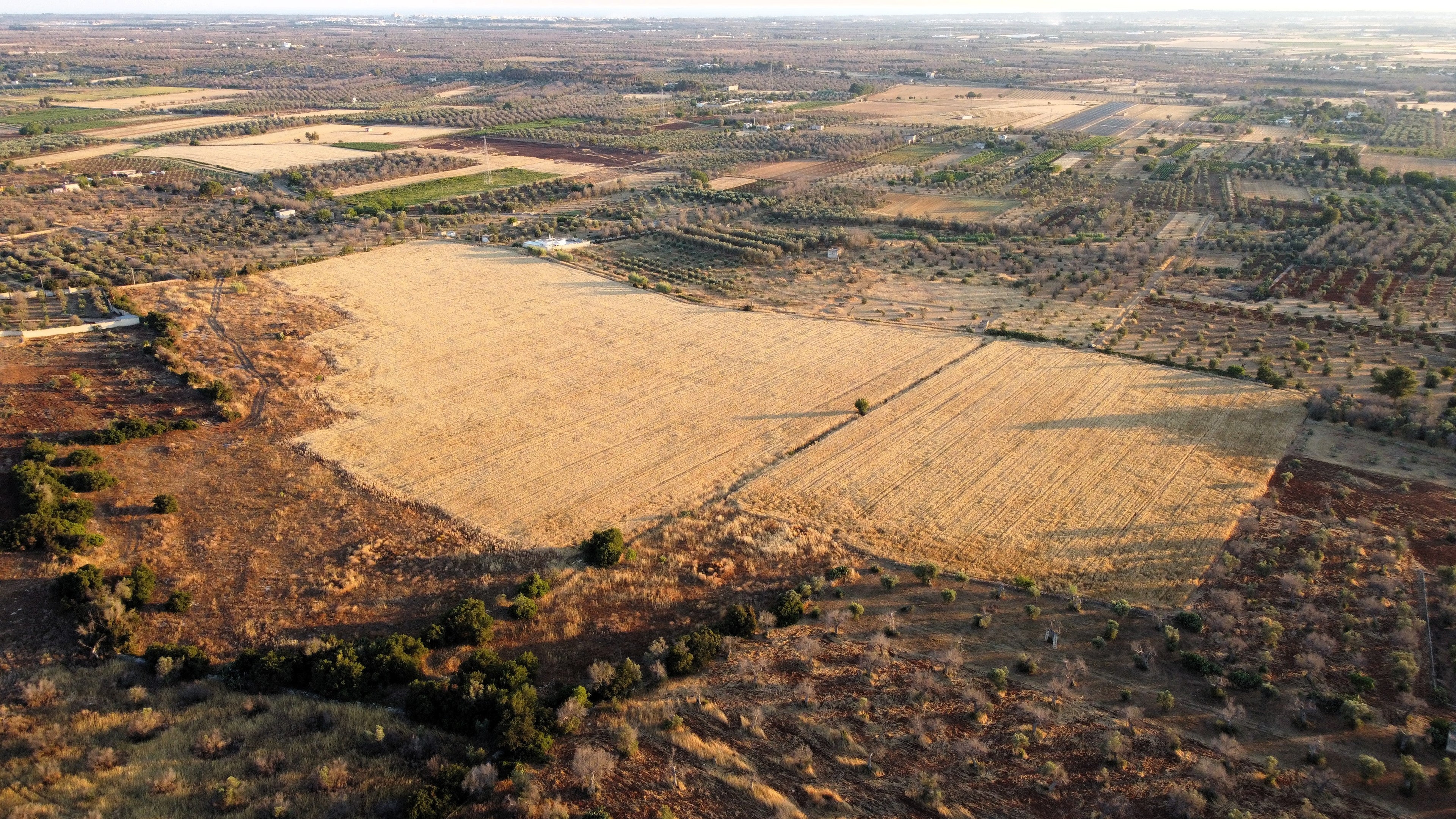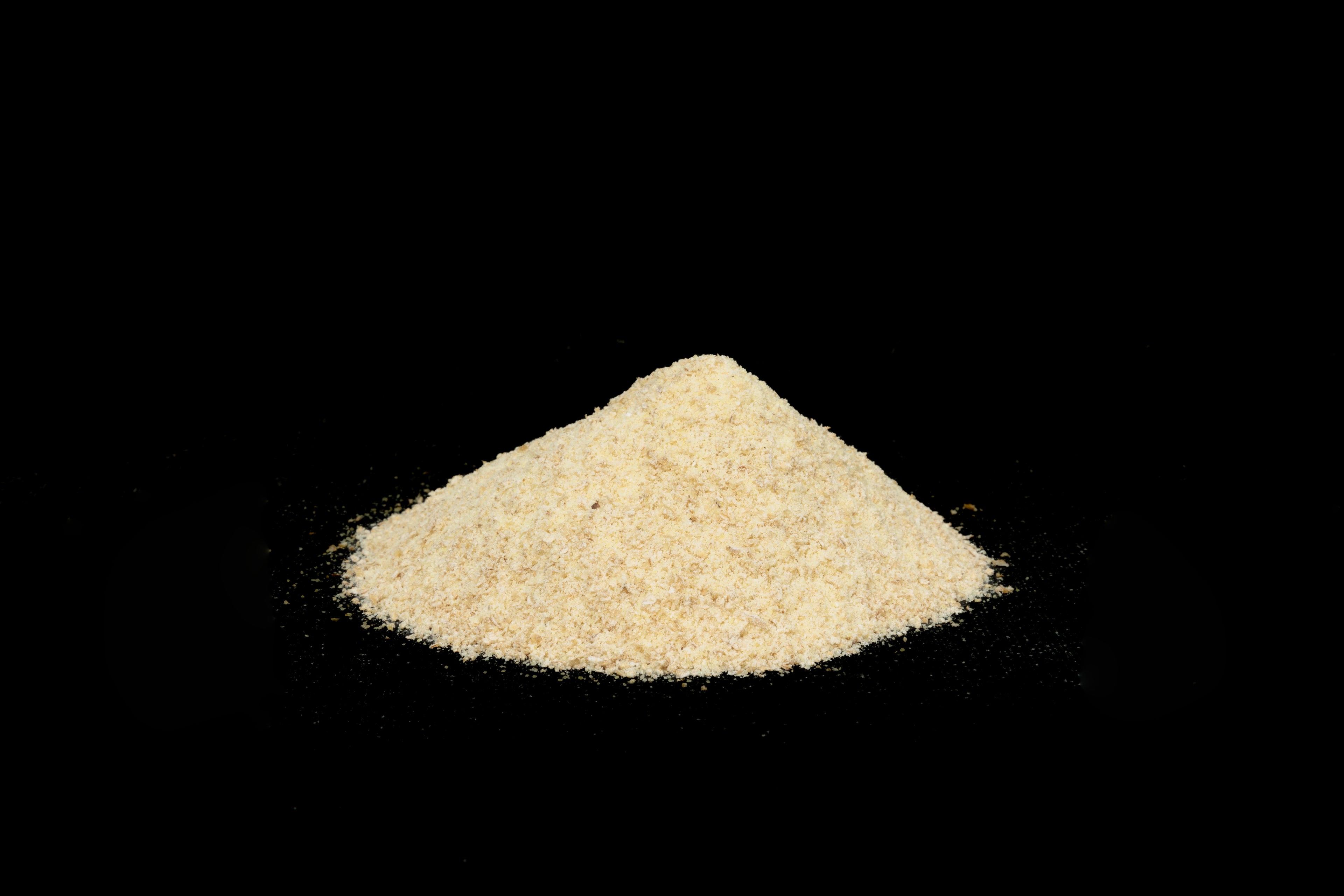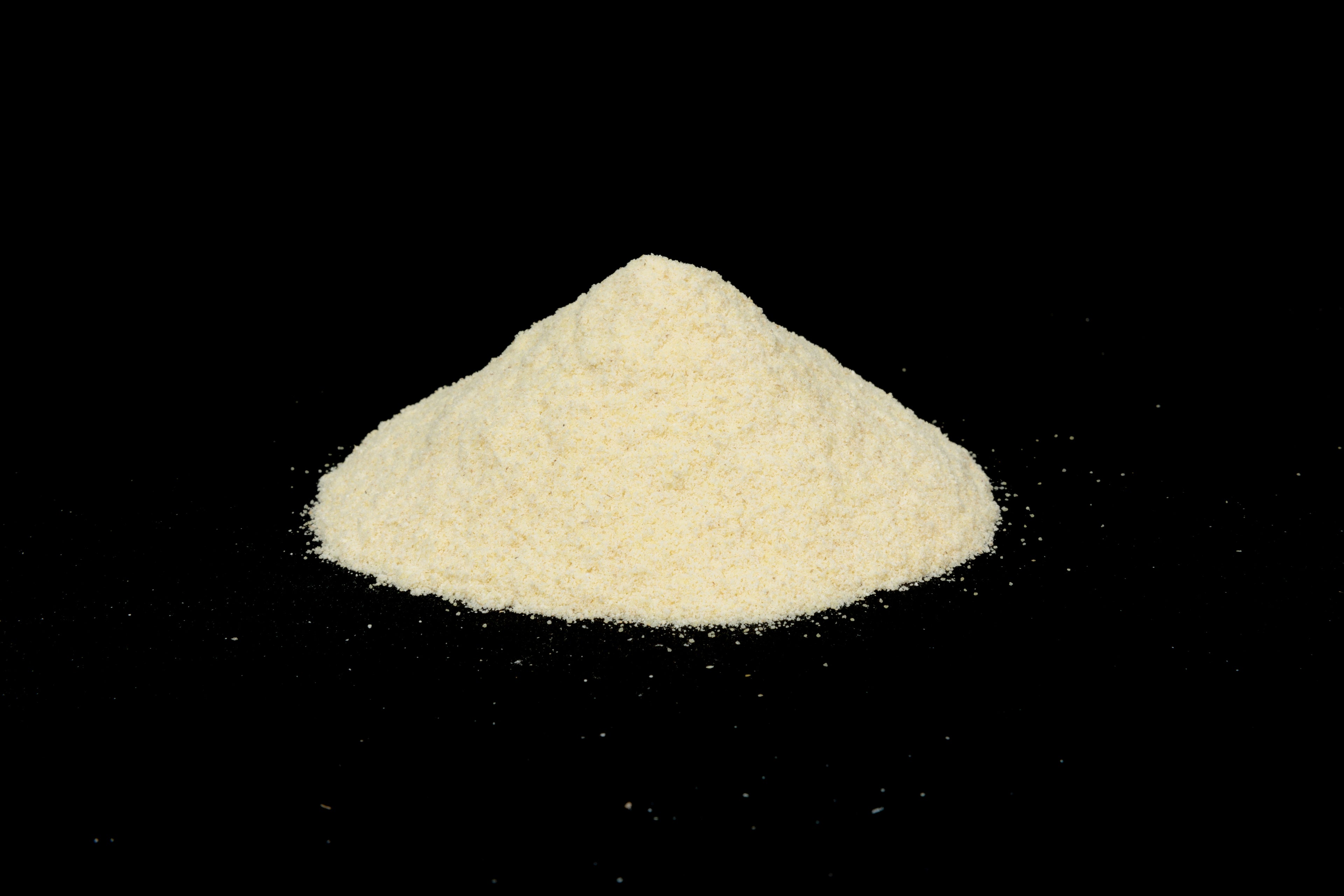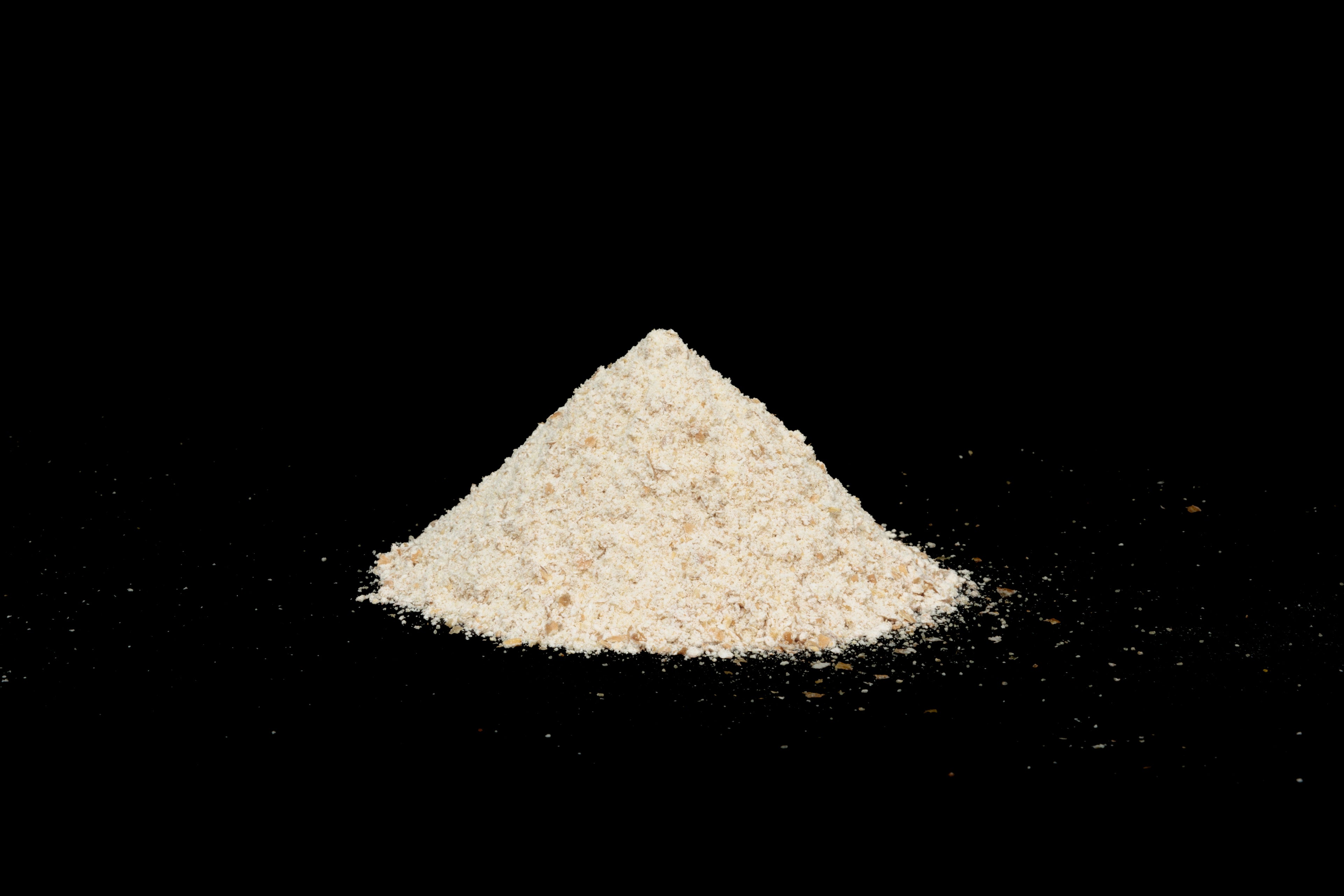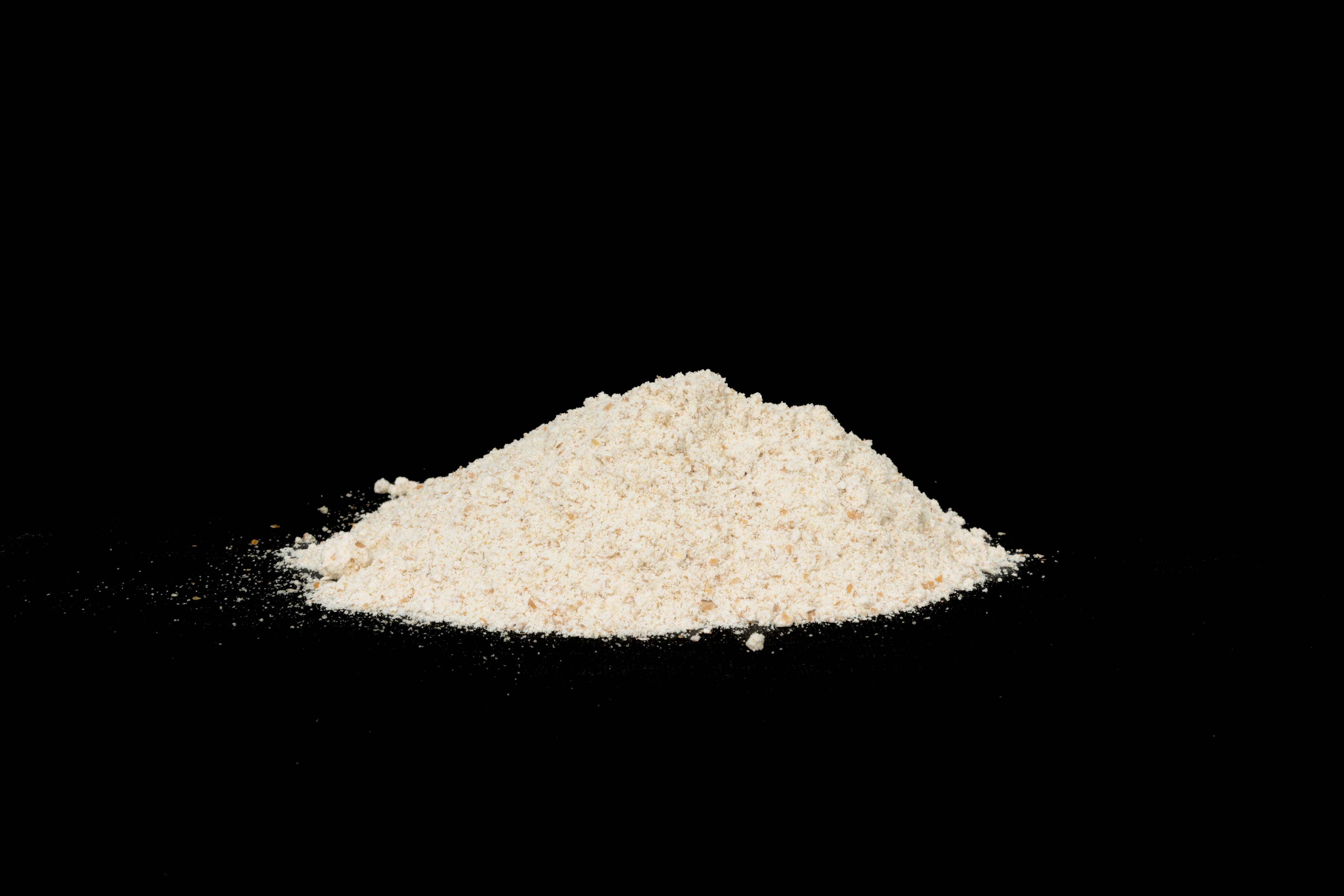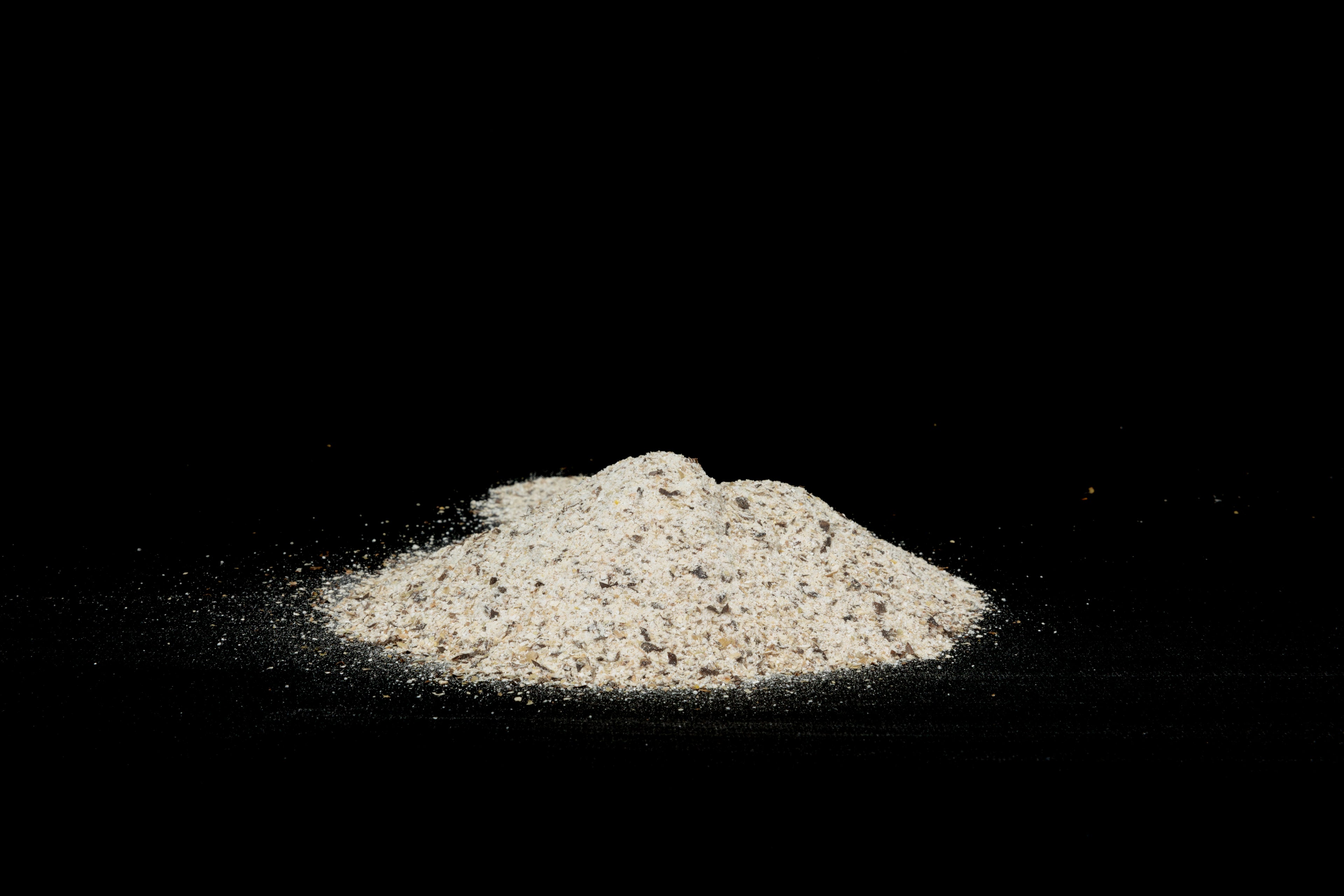
The Field
1. cultivation
Agrimò places environmental sustainability at the heart of its business. Crop rotation is active, chemicals are avoided , and recyclable packaging is used.
All the grains processed on the farm come from Agrimò's fields or those of other local farms, guaranteeing traceability of the entire process.
The company promotes synergy with other agricultural entities and the redevelopment of abandoned land in the area.
2. mechanical cleaning
As soon as the wheat arrives at the farm, we thoroughly clean it. During this phase, we remove all unwanted particles: straw, broken or foreign seeds, small wildflowers, dust, stones, and even tiny ferrous residues from agricultural machinery. This ensures that only the intact and healthy grain enters the next stage of the process.
To ensure maximum purity, we use several specialized machines:
a) Seeds remover: removes seeds that are too large or too small.
b) Magnetic separator: thanks to a magnet, it removes metal parts present in the ground or resulting from machine wear.
c) Honeycomb cylinder: discards broken and deformed grains.
d) Stone remover: removes solid foreign bodies, such as small stones.
3. natural storage
Once cleaned, the grain is stored in dedicated silos or in large bags (bags) for conservation.
To keep its quality intact we do not use chemicals: we exclusively employ the cold technique , which preserves the freshness and wholesomeness of the cereal .
When grain needs to be stored for longer periods, we use natural methods that protect it safely and traditionally: small amounts of salt, walnut or bay leaves, garlic, or diatomaceous earth (a natural mineral powder). These ingredients are distributed throughout the silos or bags from top to bottom, creating a uniform and completely eco-friendly protection.

our grains
Durum wheat
Durum wheat (Triticum durum) is one of the most common wheat varieties in the Mediterranean, cultivated for centuries in Italy and particularly suited to the hot, arid climates of the South. It is the traditional basis for the production of semolina and Italian pasta.
Agronomic characteristics
- Amber colored beans with high vitreousness.
- Compact and resistant ear.
- Excellent adaptability to Mediterranean soils and stable yield.
Nutritional values
- Medium protein content (11–13%).
- Source of complex carbohydrates and fiber.
- Significant contribution of minerals such as iron and magnesium.
- Strong gluten, ideal for pasta that holds up well during cooking.
Uses in cooking
Perfect for producing dry pasta, re-milled semolina for traditional Apulian bread, rustic pizzas, and typical baked goods.
Ancient durum wheat
Ancient durum wheat is a collection of durum wheat varieties cultivated for centuries in Italy before the advent of modern selection and intensive agriculture. These grains have not been genetically modified or crossed to increase yield, and have therefore retained their original characteristics.
We grow Khorassan (also known as Kamut® ) and Marco Aurelio , varieties grown without modern crossbreeding. Khorassan originates from the Middle East, while Marco Aurelio was revived and promoted in Italy as an alternative to industrial wheat.
Agronomic characteristics
- Larger and golden grains than modern wheat.
- Elongated and resistant spike.
- Suitable for organic farming thanks to their rusticity.
Nutritional values
- Rich in proteins (+15–20% compared to common wheat).
- High presence of minerals (selenium, zinc, magnesium).
- Good source of vitamin E and unsaturated fatty acids.
- More fragile gluten: not suitable for celiacs, but often more digestible.
Uses in cooking
Excellent for pasta and bread flours with an intense, slightly sweet flavor. Also ideal for rustic baked goods and whole-grain dishes.
Ancient Grain "Timilia"
Timilia, or Tumminia ( Triticum durum subsp. turgidum var. Timilia ), is an ancient Sicilian grain cultivated since Greek times. Today, it has been revived as a symbol of Mediterranean biodiversity and grown primarily organically.
Agronomic characteristics
- Dark, small and elongated grains.
- Rustic ear suitable for poor and dry soils.
- Short vegetative cycle (90 days).
Nutritional values
- Protein content 12–14%.
- High in fiber and minerals.
- Gluten less tenacious than modern durum wheat.
- More digestible and nutritious pasta and flours.
Uses in cooking
Timilia semolina is ideal for rustic breads, fragrant pizzas, and whole-wheat pasta with a dark color and intense flavor.
Emmer
Farro is one of the oldest Mediterranean grains, a staple of the diet since Roman times. Today, it is prized as a "rediscovered" grain for its nutritional properties and distinctive flavor.
Agronomic characteristics
- Elongated, light brown grains.
- Resistant to cold and marginal soils.
- Widespread cultivation under organic regime.
Nutritional values
- Protein 11–12%.
- Rich in fiber, B vitamins and minerals (phosphorus, magnesium, iron).
- Gluten is present but is more digestible than modern wheat.
- Lower glycemic index.
Uses in cooking
It is used whole (soups, salads, broths) or ground into flour for bread, pasta and rustic desserts with an aromatic and slightly nutty flavour.
Whole Wheat
Whole wheat is obtained by grinding the entire grain, including the bran and germ. This method is closest to the ancient tradition, when flour was consumed without any refinement.
Agronomic characteristics
- It comes from local hard or soft wheat.
- Stone ground to preserve nutrients.
- Darker color and rustic texture.
Nutritional values
- Rich in fibre (8–12%).
- Protein 11–13%.
- B vitamins and vitamin E.
- Minerals such as iron, magnesium and zinc.
- Lower glycemic index than refined flours.
Uses in cooking
Excellent for homemade bread, wholemeal pasta, rustic pizzas and more nutritious and digestible baked goods, with an intense and deep flavour.
BARLEY
A cereal that has accompanied man for millennia: already widespread in ancient Mediterranean civilizations, barley is today appreciated for its nutritional qualities and delicate flavor, with slightly sweet and toasted notes.
Agronomic characteristics
- Round, light-coloured grains.
- Resistant to harsh climates and poor soils.
- Often grown organically and with low environmental impact.
Nutritional values
- Protein 10–12%.
- Natural source of fiber and B vitamins.
- Rich in essential minerals (phosphorus, magnesium, iron, potassium).
- Gluten is present but in smaller quantities than in wheat.
- Low glycemic index, useful for a balanced diet.
Uses in cooking
It can be used whole grains for soups, broths, and salads, or ground into flour for rustic bread, focaccia, biscuits, and desserts with a delicate, lightly toasted flavor. It's also the ideal ingredient for making beverages like barley coffee.
Soft Wheat (Shortcrust Pastries)
Soft wheat is the most common grain in Italy and Europe. In its finely ground form, it is ideal for baking, where it provides crispness, delicacy, and a balanced flavor. Perfect for shortcrust pastry, biscuits, and tarts.
Agronomic characteristics
- Round, light-coloured grains.
- Grown in plains and in temperate climates.
- Often processed in a controlled and sustainable supply chain.
Nutritional values
- Protein 9–11%.
- Source of slow-release complex carbohydrates.
- B vitamins and mineral salts (phosphorus, magnesium, iron).
- Gluten is present but in smaller quantities than in durum wheat.
Uses in cooking
Perfect for crumbly sweet doughs: shortcrust pastry, biscuits, tarts, and traditional desserts. It provides a crunchy yet delicate texture, ensuring consistently light and harmonious results.
Soft Wheat (Leavened)
Soft wheat, in its gluten-rich varieties, is ideal for leavened baked goods: bread, pizza, focaccia, and large leavened desserts. It adds elasticity, softness, and volume to dough.
Agronomic characteristics
- Light, round grains, widespread in temperate areas.
- High adaptability to different terrains.
- Widely cultivated with supply chains dedicated to bread making.
Nutritional values
- Protein 11–13%, with good gluten content.
- Source of fiber, carbohydrates and B vitamins.
- Contains essential minerals (potassium, iron, phosphorus).
- It guarantees excellent leavening and structure to the dough.
Uses in cooking
Ideal for homemade bread, light and fragrant pizzas, focaccia, and large sweet leavened products like panettone, colomba, and brioche. It ensures regular air bubbles, volume, and softness.
